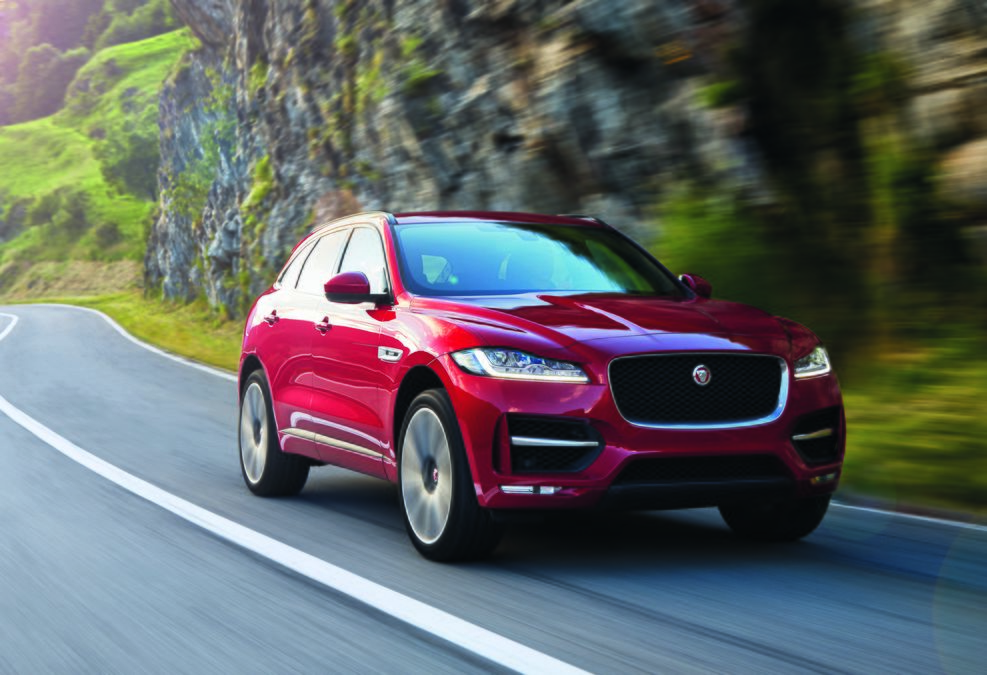Jaguar F-Pace R Sport: Jag's big cat is a sporty SUV surprise packet
The mid-size F-Pace R Sport 30t AWD manages to channel some of the sporty DNA of the legendary E-Type coupe.

The well-dressed businesswoman crossing at the lights runs a wary eye over traffic idling on the red in the side street. Her casual glance becomes a double-take as she takes in the distinctive black-mesh grille and cats-eye headlights, lingering a moment longer than necessary. It’s as if her brain is computing, “Oh, it’s a Jaguar …” and a moment later, an approving arch of well-manicured eyebrows conveys, “hmm, a Jaguar SUV … nice!”
It wasn’t quite an Austin Powers-style “shagadelic baby!” moment, but it was confirmation, at least, that the brand’s recently departed design director, Scotsman Ian Callum, has succeeded in re-inventing the look of modern Jaguars, making them something again to gape at and aspire to: no mean feat for a mid-sized suburb-cruising SUV, in this case the Jaguar F-Pace R Sport 30t AWD (starting price $91,445, as tested $100,335).
It’s been more than half a century since the fabulous cigar-shaped lines of the Jaguar E-Type – Austin’s favoured mode of transport – shocked the motoring world with its beauty and power. That car and the brand’s broader sporting heritage continues to cast a sizeable Union Jack-tinged shadow over everything Jaguar does.
Which, it turns out, is no bad thing, because in the case of the F-Pace – Jaguar’s belated entrant into the booming premium SUV category – the brand had to set its sights on delivering a premium mid-sized SUV with all the agility and responsiveness on which the legend was built.
Arriving late to the party as it did in 2016, the F-Pace had the benefit of having had a good look at the competition. Most importantly, it had time to run the rule over its key rival, the Porsche Macan, which debuted in 2014.
It helped that, by then, Jaguar was already well on the way to re-establishing itself as a force in the prestige and performance market, and was able to base its new SUV on the impressively-honed chassis of its XE and XF models.
Being able to lean on its in-house partner, Land Rover, for expertise – not just in all-wheel drive technology, but also in advanced aluminium body construction – helps explain the F-Pace’s 80-per cent aluminium body construction.
That aids weight and while 1770kg might not seem especially svelte, it’s a packed suitcase under the weight of the Macan, and nearly 300kg lighter than the nearest and trimmest Mercedes-Benz rival, the GLE.
But where the Macan offers a sparse two-model lineup, F-Pace buyers choose their weapon from an expansive model range that covers no fewer than 18 variants, encompassing a price spread from $72,510 to $104,827.
Powertrain options include a 2.0-litre turbo-diesel, a 2.0-litre twin turbo-diesel, a 3.0-litre V6 twin turbo-diesel, a turbocharged 2.0-litre petrol in two different tunes, and a 3.0-litre supercharged petrol V6. There’s also a stonking new supercharged 5.0-litre V8 F-Pace SVR version due any day.
Currently, most buyers choose diesel, but for this test we settled on the more powerful of the two turbocharged petrol fours, a 221kW/400Nm version, designated the F-Pace R-Sport 30t.
R-Sport sits above the entry-level Prestige model, boasting a sportier appearance and a few more bells and whistles inside and out.
Key exterior features include 19-inch alloys, blacked-out radiator grille and window surrounds, sportier front and rear bumpers, and lairy satin chrome side power vents with R-Sport badges.
Inside, there’s perforated leather sport seats with bold-red contrast stitching, leather-wrapped instrument panel, and an R-Sport branded leather steering wheel among other accoutrements.
Under the aluminium bonnet with its distinctive power bulge, the 2.0-litre turbo engine channels its power back through an impressively slick ZF eight-speed automatic, and in turn through all four of its 19-inch wheels, helping the F-Pace dispatch the 0-100km/h sprint in a brisk 6.0 secs, seven-tenths quicker than the Porsche Macan.
The engine doesn’t offer much by way of aural pleasure and it’s not neck-strainingly rapid but, hey, it can beat a Porsche, which is really all that matters, eh?
Close your eyes and squint in side profile and the F-Pace could be a Porsche SUV; its shallow-glasshouse, dramatically raked D-pillar and muscular wheel arches all alluding to something that’s up for a bit more than simply hauling the tin lids to school.
Up front, the signature cat-faced growler snarls out from the centre of a gaping cross-wired grille, with feline-like headlights sharply swept back around into the body. The overall look is handsome and sporty, carrying on the legacy of sleek modernity established by Ian Callum.
Based as it is on the Jaguar XE and XF chassis architecture, the F-Pace starts life with pretty good underpinnings and out on the road this performance pedigree comes to the fore. It’s delightfully tactile, with accurate steering, strong grip and impressive body control, all of which combine to give it fluency often absent from the SUV genre.
Inside, the well-appointed cabin is genuinely roomy, with decent space for four, or five at a pinch.
A proper boot that means you can bank on it to accommodate the gear requirements of a regular family.
With the F-Pace, Jaguar set out to combine its sports car DNA with the practicality of a larger vehicle, and to wrap it all in a great design. It largely nails the brief and in so doing, manages to channel its emblematic 1950s advertising slogan about Jaguars boasting ‘Grace, Pace and Space’.
Not quite sure what Austin Powers would make of it, but let’s assume he’d rate it “Groovy, baby!”.
















Hi Guest, join in the discussion on Jaguar F-Pace R Sport: Jag's big cat is a sporty SUV surprise packet